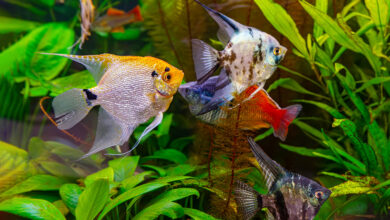When you purchase through links on our site, we may earn a commission. Here’s how it works.
Think your pleco survives on algae alone? That’s like feeding a bodybuilder only lettuce. These hardworking tank cleaners, aka plecostomus fish, need real meals to stay healthy.
Here’s exactly what to feed pleco for a balanced pleco diet: the veggies, proteins, and even the weird stuff (yes, they eat wood) that keep them thriving. Not just scraping by.
Table of Contents
| Algae Wafer | Veggie Rounds | Gel Premix | Bug Bites |
|---|---|---|---|
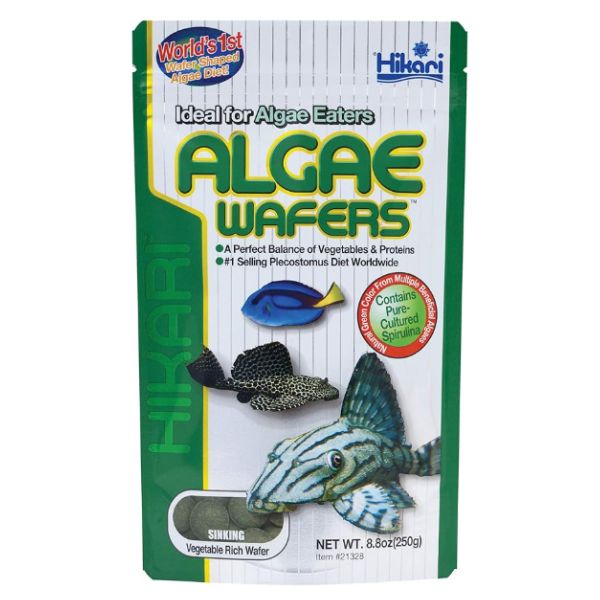 | 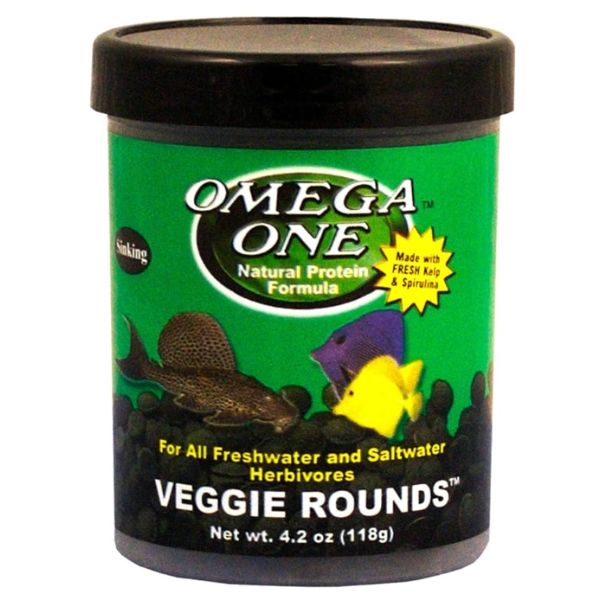 | 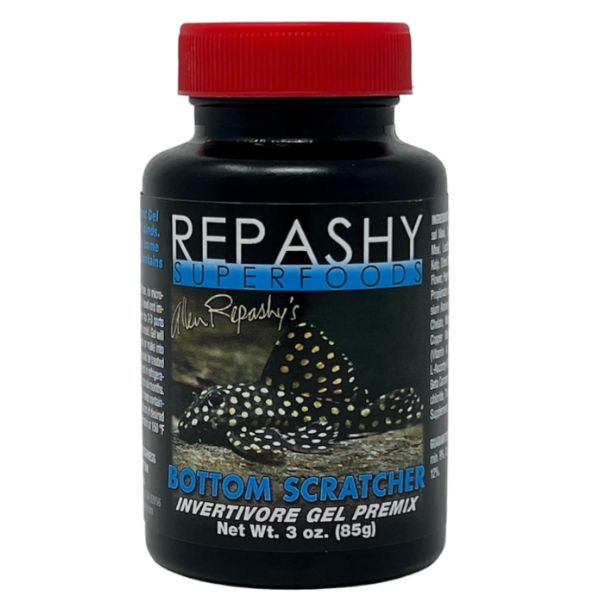 | 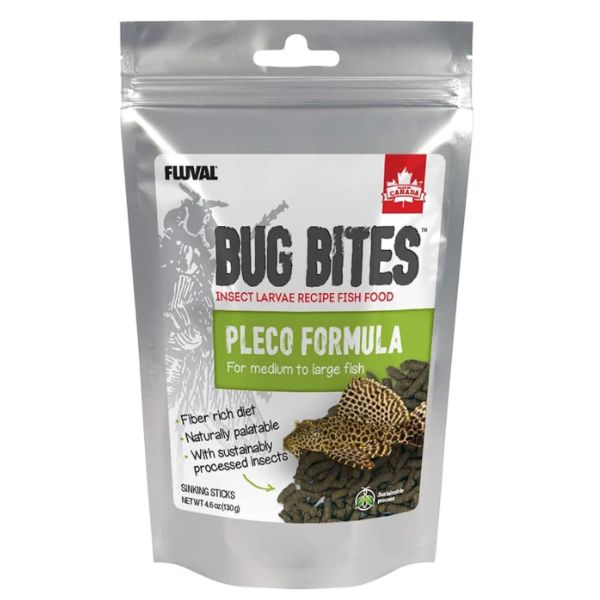 |
| Hikari | Omega One | Repashy | Fluval |
| View on Amazon | View on Amazon | View on Amazon | View on Amazon |
| Read Review | Read Review | Read Review | Read Review |
Why Algae Is Not Enough for a Healthy Pleco Diet
You’ve heard it a thousand times: “Plecos live off the algae in your tank.” Not true. In the wild, these hardworking bottom-feeders, plecostomus fish, spend their nights scraping algae and hunting for plant bits, seeds, and tiny insects.
When all they get in captivity is algae, their famous tank-cleaning appetite slowly disappears. And here’s the catch: A pure-algae diet is like feeding a marathon runner nothing but salad. Your pleco might look busy, but it’s running on fumes.
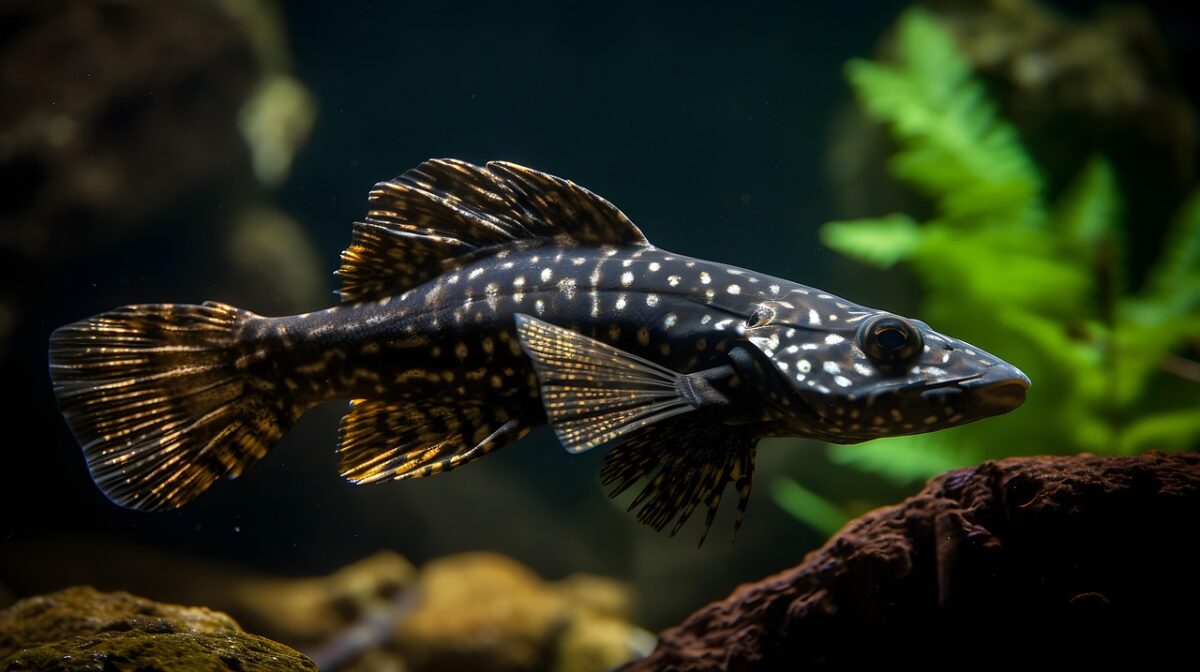
Why Algae Alone Doesn’t Cut It
- Missing nutrients: Algae doesn’t supply enough protein or minerals for muscle growth and color.
- Boredom and overeating: When plecos can’t find variety, they start gnawing on décor or other fish.
- Slower metabolism: A limited pleco diet makes them lethargic and less effective at tank cleaning.
Algae should be only one part of what you feed pleco fish; think of it as the base layer of a bigger menu.
The Basics of a Plecostomus Diet
Before deciding what to feed pleco fish, it helps to understand how they eat in the wild. Plecos, or plecostomus catfish, belong to the Loricariidae family and use their suction-cup mouths to scrape surfaces for food.
They’re primarily herbivores but naturally supplement with protein sources they find while foraging. In rivers and flooded forests, plecos feed on a mix of algae, decaying plant matter, seeds, small crustaceans, and biofilm that grows on wood and rocks.
This varied menu keeps them strong, active, and colorful. In captivity, a balanced pleco diet should copy that variety as closely as possible.
Key Feeding Traits
- Nocturnal behavior: Plecos eat most actively after lights out. Feed them in the evening when the tank is quiet.
- Continuous grazers: They prefer steady access to food rather than one large feeding.
- Wood consumption: Many species, especially common and bristlenose plecos, ingest small amounts of driftwood to aid digestion and tooth health.
The Goal of a Balanced Plecostomus Diet
To keep a healthy aquarium, aim for a mix of plant-based foods, controlled protein portions, and natural roughage such as driftwood or algae wafers. Re-creating this balance supports both your pleco’s well-being and its role as the tank’s natural cleaner.
Next, I’ll look at the complete breakdown of what do plecos eat. The quick-reference chart shows exactly how to combine vegetables, proteins, and treats for the ideal feeding plan.
The Pleco Menu: Exactly What to Feed Pleco Fish for a Balanced Diet
If you want the short version, here’s what to feed pleco fish for a balanced, healthy diet. Plecos are omnivores. They need a mix of vegetables and algae for fiber, plus protein-rich foods to stay strong and colorful.
Driftwood should always be available because many plecostomus species use it to help digestion and keep their teeth healthy.
| Food Type | Examples | How Often | Why It Matters |
|---|---|---|---|
| Vegetables | Zucchini, cucumber, spinach, peas | 3–5 times per week | Provides fiber, vitamins, and natural grazing material |
| Fruits (treats) | Cantaloupe, papaya, honeydew | Once per week | Adds nutrients and variety |
| Protein | Shrimp, bloodworms, worms, sinking pellets | 2–3 times per week | Supports growth, coloration, and immune health |
| Wood / Driftwood | Malaysian, mopani, or cholla wood | Always available | Aids digestion and offers natural roughage |
| Algae / Wafers | Tank algae, algae wafers | Daily access | Core food source and staple of the pleco diet |
A strong plecostomus food plan uses all of these elements. Avoid feeding only one type of food; variety keeps them healthy and your tank cleaner.
Tip: Feed plecos after the tank lights are off. They are nocturnal and eat best when undisturbed.
Next, I’ll look at the most popular vegetables plecos love to eat and how to prepare them safely.
Top 10 Vegetables Plecos Love & How to Prep Them
Vegetables are the foundation of a healthy pleco diet. They provide the fiber and nutrients your plecostomus fish needs for digestion, energy, and color:
- Zucchini: This vegetable is a favorite among plecos. It’s low in calories and high in nutrients, making it a great addition to their diet. Cut it into small pieces and feed it raw or boiled.
- Peas: Shelled peas are an excellent source of fiber and protein for plecos. They also contain vitamins and minerals that are essential for their overall health. You can feed them frozen or fresh peas.
- Cucumber: Cucumbers are another vegetable that plecos love. They are low in calories and high in water content, making them a great choice for hydration. Cut them into thin slices and feed them raw.
- Lettuce: Plecos can also eat lettuce, but it’s important to choose the right type. Romaine lettuce is the best option as it’s low in oxalic acid, which can be harmful to plecos.
- Broccoli: Broccoli is a nutritious vegetable that plecos can eat in moderation. It’s high in fiber and vitamin C, but it also contains goitrogens, which can interfere with thyroid function. Feed them small pieces of broccoli florets.
- Lima beans: Lima beans are a good source of protein and fiber for plecos. They also contain essential vitamins and minerals. Cook them and feed them in small quantities.
- Spinach: Spinach is another vegetable that plecos can eat in moderation. It’s high in iron and other essential nutrients, but it also contains oxalic acid, which can be harmful in large quantities.
- Carrots: Carrots are a good source of vitamin A and fiber for plecos. They also contain other essential vitamins and minerals. Cut them into small pieces and feed them raw or boiled.
- Kale: Kale is a nutritious vegetable that plecos can eat in moderation. It’s high in fiber, vitamin C, and other essential nutrients.
- Cabbage: Cabbage is another vegetable that plecos can eat in moderation. It’s high in fiber and other essential nutrients, but it also contains goitrogens, which can interfere with thyroid function.
Feeding Tips for Vegetables
- Always rinse fresh produce thoroughly before placing it in the tank.
- Remove uneaten portions after 6–8 hours to avoid clouding the water.
- Rotate 2–3 different vegetables each week to maintain balance, prevent boredom, and improve nutrition.
Vegetables are the easiest way to improve your pleco’s health and energy.
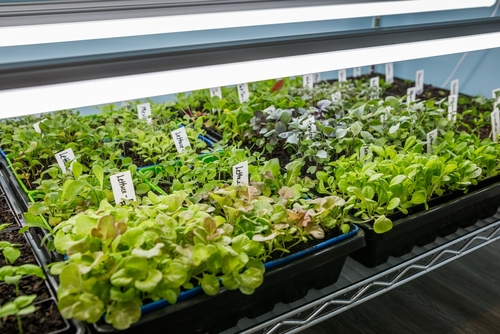
Next, I’ll look at fruits – occasional treats that add variety to your plecostomus food plan without upsetting the balance of the main diet.
5 Sweet Treats – Safe Fruits for Plecostomus Fish
Fruits aren’t a staple food for plecos, but small portions can make their diet more interesting and provide extra vitamins. In the wild, plecostomus fish occasionally nibble on fallen fruit or plant matter along riverbanks.
Offering fruit once a week gives them natural sugars, vitamin C, and hydration. Just keep portions small to prevent water quality issues.
- Cantaloupe: A good source of vitamins A and C, as well as potassium. It is also low in fat and calories, making it a healthy snack for your pleco. Slice thinly and remove the rind before dropping a small piece into the tank.
- Papaya: Papaya is a rich source of vitamin C, folate, and potassium. It also contains an enzyme called papain, which can aid in digestion. Cut into soft cubes and remove uneaten bits after a few hours.
- Honeydew Melon: It is rich in vitamin C and potassium, and is a good source of dietary fiber. To feed your pleco honeydew melon, cut it into small pieces and drop it into the tank. Light and easy to eat.
- Watermelon: Occasional summer treat, high in water content. Feed sparingly because of its natural sugar.
- Apple (peeled): Provides fiber and a bit of crunch. Slice very thin and feed occasionally; remove the skin to make it easier to digest.
Feeding Tips for Fruit
- Feed fruit only once a week as a supplement, not a main course.
- Choose soft, ripe fruits and cut them into small pieces.
- Remove all leftovers promptly to prevent tank fouling.
Up next, I’ll look at how to provide the right balance of protein foods that help your pleco grow strong and maintain color without overfeeding.
6 High-Protein Foods for Plecos – When and How to Feed Them
While vegetables make up most of a healthy pleco diet, protein foods are equally important for growth, color, and overall vitality. In the wild, plecostomus fish forage for small insects, crustaceans, and other bits of animal matter along riverbeds.
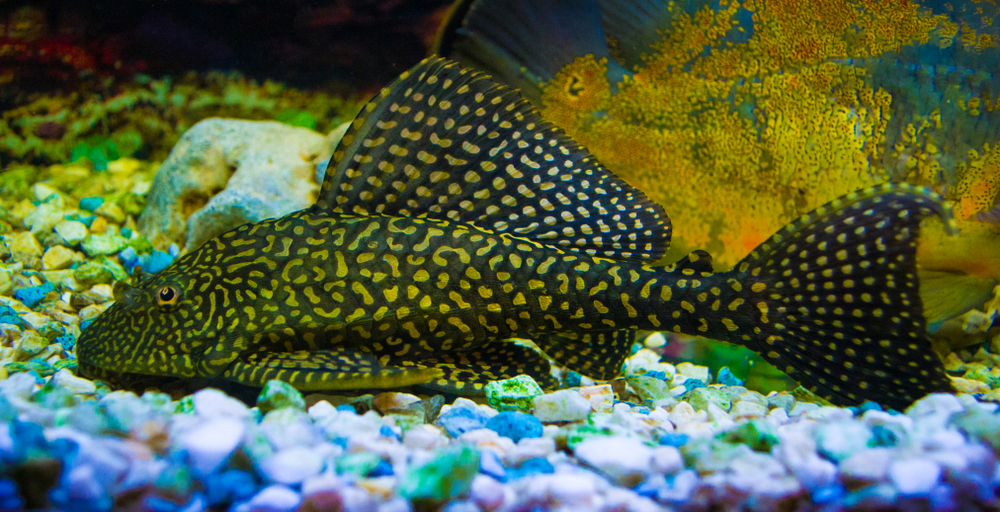
In captivity, offering similar protein sources keeps them active and supports healthy development. Here are the best protein foods to feed pleco fish:
- Meat: An excellent source of protein for plecos. You can feed them lean cuts of beef, chicken, or turkey. However, it’s essential to ensure that the meat is cooked thoroughly and free of any spices or seasoning. Feeding raw meat to plecos can lead to bacterial infections and other health issues.
- Shrimp: Fresh or frozen shrimp, cooked or uncooked, are excellent sources of protein. Remove the shell and feed small, chopped pieces two or three times a week.
- Bloodworms: Packed with nutrients and easy to digest. Feed frozen or freeze-dried bloodworms in moderation. You can feed them live or frozen bloodworms, but it’s essential to ensure that they are free of any parasites or diseases.
- Worm: Earthworms, mealworms, or blackworms can be fed occasionally. Always ensure they’re pesticide-free or raised for aquarium use.
- Seafood: Pieces of fresh or frozen fish, crab, or squid can be offered once in a while. Avoid anything heavily processed or seasoned. It’s essential to ensure that the seafood is free of any bones or scales that can cause digestive issues.
- Sinking Pellets or Wafers: High-quality plecostomus food pellets such as Hikari Algae Wafers or Omega One Veggie Rounds provide balanced protein and plant ingredients in one convenient form. Read on for my top pellet and wafer recommendations.
How Often to Feed Protein
- Offer protein foods two or three times a week alongside vegetables.
- Remove leftovers after a few hours to prevent ammonia buildup.
- Alternate protein sources to maintain variety and digestive balance.
Too much protein can cause bloating or water quality problems, while too little can lead to slow growth and dull color. The goal is moderation—small portions, a few times a week—paired with plenty of vegetables and algae.
Next, I’ll look at the best store-bought foods that make feeding easier and more consistent, without losing nutritional balance.
Best Store-Bought Pleco Foods (Top Brands & Algae Wafers)
A well-balanced pleco diet can include both fresh foods and high-quality commercial options. Store-bought plecostomus food is formulated to provide the right mix of plant fiber, protein, and minerals while keeping feeding simple and consistent.
These products are especially useful for busy aquarists who want to maintain stable nutrition between fresh feedings. But it is important to note that plecos should not be fed exclusively on fish food, as this can lead to health problems.
Hikari Algae Wafers Review
Hikari’s wafers are considered the standard for pleco feeding. Each disc contains spirulina algae, vegetable matter, and essential minerals to support immune health.
They sink quickly and hold their shape underwater, allowing plecos to scrape at them naturally without clouding the tank. Most owners notice cleaner glass and brighter coloration within weeks of regular feeding.
Omega One Veggie Rounds Review
These rounds combine ocean kelp, spirulina, and fresh seafood for a balanced blend of plant and protein ingredients. The formula uses whole salmon rather than fish meal, making it richer in natural fats and vitamins.
They’re firm enough to prevent waste yet soft enough for smaller plecos to rasp easily. They’re a good all-around choice for common and bristlenose plecos.
Repashy Bottom Scratcher Gel Premix Review
Repashy Bottom Scratcher is a high-protein gel food designed to mimic the natural feeding behavior of bottom-dwelling fish. Unlike wafers or flakes, it’s blended fresh at home and sets into a soft, grazeable gel that holds together underwater for hours.
This formula combines insect and marine proteins with plant-based nutrients to cover every dietary need. It contains black soldier fly larvae and krill for easily digestible protein, spirulina and seaweed for essential plant nutrition, and added minerals to support healthy digestion and strong bone structure.
Fluval Bug Bites Pleco Formula Review
Formulated from sustainably harvested black soldier fly larvae, this food provides high-quality insect protein combined with salmon and plant ingredients. The pellets sink slowly, letting plecos feed along the substrate or on vertical surfaces.
It’s especially useful for species that need extra protein but still benefit from vegetable content. And this formula is specially made with pleco diets in mind.
Feeding Tips for Store-Bought Pleco Foods
- Use sinking pellets or wafers so plecos can feed comfortably along the bottom.
- Combine store-bought food with fresh vegetables several times a week for balance.
- Replace old or stale food every few months to maintain quality.
Store-bought products make it easier to maintain variety and ensure your pleco diet remains complete. When combined with fresh vegetables, fruits, and occasional protein foods, these commercial options can keep your plecostomus healthy and active with minimal effort.
Next, I’ll explore one of the more surprising parts of pleco nutrition: why these fish actually eat wood, and how it benefits their digestion.
Why Plecos Eat Wood: 4 Reasons
One of the strangest facts about plecos is that many species actually eat wood. In the wild, plecostomus fish live among submerged logs and roots, using their rough mouths to scrape off algae and small amounts of soft wood.
This behavior isn’t just a habit; it’s essential to their digestion and long-term health. These are the reasons why plecos eat wood:
1. Natural Roughage for Digestion
The fibrous texture of wood acts like dietary fiber, helping move food through the pleco’s digestive system. Without enough roughage, some plecos can develop bloating or digestive issues even if they’re fed plenty of vegetables.
2. Maintains Healthy Mouthparts
A pleco’s mouth is designed for constant rasping. Scraping wood keeps their teeth and mouth structures strong, preventing overgrowth or damage.
3. Encourages Natural Behavior
Access to driftwood allows plecos to display natural feeding behavior, reducing stress and aggression in community tanks.
4. Supports Microbial Balance
Wood surfaces collect biofilm and microorganisms that plecos naturally consume in the wild. These provide trace nutrients that aren’t found in most commercial foods.
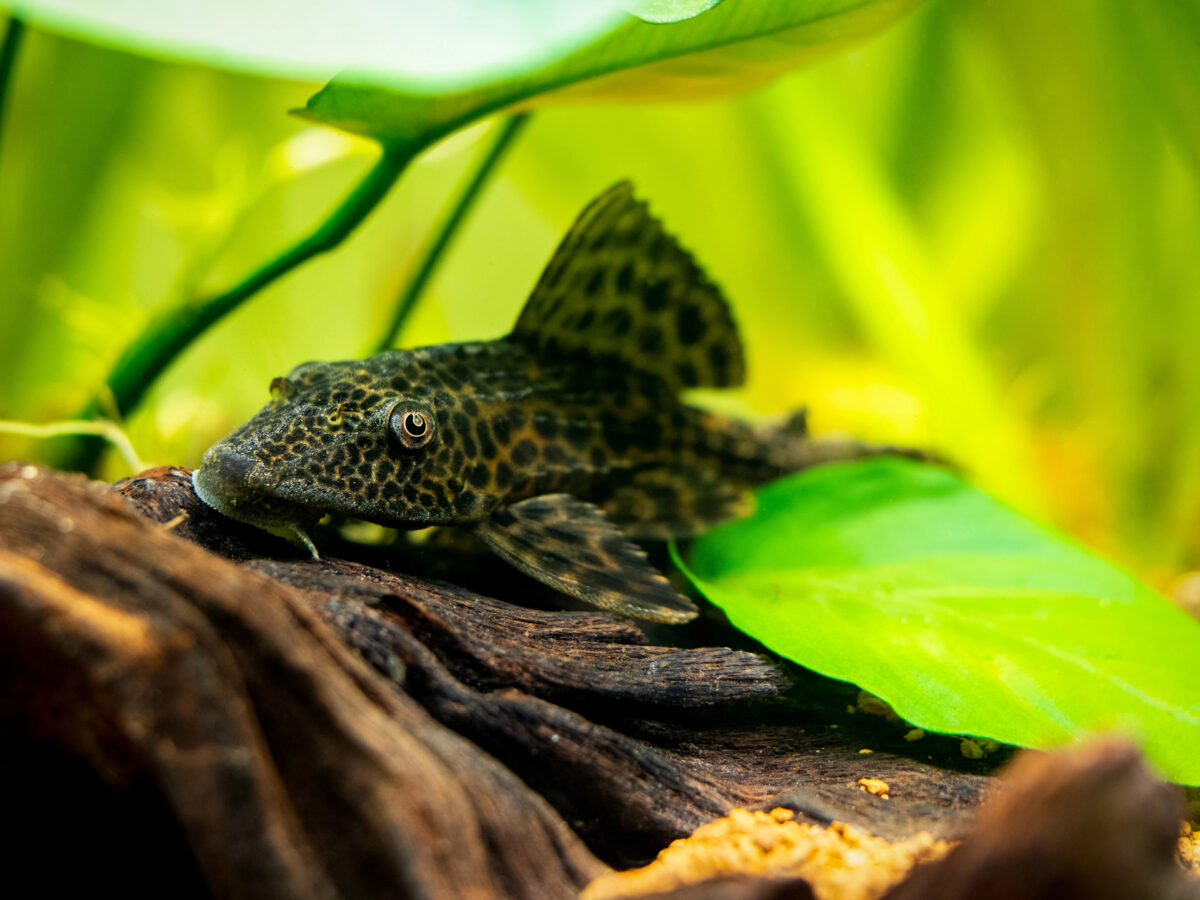
3 Best Types of Wood for Plecostomus Fish
- Malaysian Driftwood: Dense and long-lasting, it releases beneficial tannins that slightly tint the water and mimic natural habitats. A top choice for most tanks.
- Mopani Wood: Attractive two-tone look and very durable. It’s heavier than many other types, so it sinks quickly. Soak it for a few days before use to reduce initial tannin release.
- Cholla Wood: Lightweight and full of natural holes that grow biofilm quickly. Ideal for smaller pleco species and shrimp tanks.
Tips for Using Wood in a Pleco Tank
- Keep at least one piece of driftwood in the aquarium at all times.
- Boil or soak new wood before adding it to remove debris and excess tannins.
- Replace soft or decomposing pieces every few months.
- Avoid painted, resin-coated, or treated wood, as they can release harmful chemicals.
Including wood in the pleco diet isn’t optional; it’s part of replicating their natural feeding environment. Combined with vegetables, protein foods, and algae wafers, driftwood completes the balanced diet that keeps plecos healthy, active, and thriving.
Next, I’ll look at the foods and feeding habits you should avoid, mistakes that can undo all your hard work.
5 Foods to Avoid + Common Pleco Feeding Mistakes
Feeding plecos is straightforward once you understand their diet, but a few common mistakes can lead to health problems or poor tank conditions. Avoiding these errors helps your plecostomus fish stay healthy and your aquarium stay clean.
Foods to Avoid
- Bread and Pasta: These foods contain starches and fillers that plecos can’t digest properly. They quickly rot in the tank and cause cloudy water.
- Citrus Fruits: Oranges, lemons, and other acidic fruits can irritate a pleco’s digestive system. Stick to low-acid options such as melon or papaya.
- Raw or Fatty Meat: Plecos aren’t built to handle heavy animal fat. Raw meat can also introduce bacteria. If you offer meat, it should be cooked, lean, and used rarely.
- Salty or Seasoned Foods: Never feed leftovers from human meals. Salt and spices can cause stress and long-term health issues in freshwater fish.
- Uneaten Vegetables Left Too Long: Even safe foods become a problem if they’re left to decompose. Always remove leftovers after a maximum of 6–8 hours to keep ammonia levels low.
4 Common Feeding Mistakes
- Overfeeding: Plecos are slow eaters. Too much food can cause bloating and poor water quality. Feed small amounts that they can finish within a few hours.
- Ignoring Variety: A single type of food, even algae wafers, won’t cover every nutritional need. Rotate between vegetables, protein, and driftwood for a complete pleco diet.
- Feeding During the Day: Plecos are nocturnal. Feeding while the tank is bright often means other fish eat the food first. Feed after lights out for best results.
- Assuming Algae Alone Is Enough: The biggest myth in pleco care. Algae is healthy, but incomplete – it’s only the foundation of what to feed pleco fish.
Being mindful of these simple points prevents most dietary issues.
Feeding and Territory: Preventing Pleco Food Fights
Plecos can be surprisingly territorial, especially larger species and adult males. They often claim caves, driftwood, or tank sections as their own and may chase away other bottom dwellers during feeding.
To reduce tension, offer food in several spots across the tank instead of just one area. Use multiple sinking wafers or vegetable clips so each fish can feed undisturbed. Providing plenty of hiding spaces also helps diffuse aggression and keeps mealtime calm for the whole aquarium.
Are Bettas and Plecos Good Tank Mates? Find out if bettas and plecos can get along in our dedicated article.
Up next, I’ll look at how to recognize the early signs of a malnourished pleco and what to do if your fish isn’t eating or looks unhealthy.
5 Signs of a Malnourished Pleco
Even with the best intentions, it’s easy to miss the signs that a pleco isn’t getting enough nutrition. Because these fish are nocturnal and secretive, problems often go unnoticed until they become serious.
Recognizing early warning signs and correcting the diet quickly can prevent long-term health issues.
1. Sunken Belly
A healthy pleco should have a smooth, slightly rounded stomach. A visible hollow or sharp indentation is a clear sign of underfeeding or poor nutrition.
2. Dull or Fading Color
Bright markings indicate good health. When colors fade or the body looks pale, it may point to a lack of vitamins or variety in the pleco diet.
3. Sluggish Movement
Plecos should be active at night, exploring and grazing. A listless or motionless pleco might not be getting enough energy from its food.
4. Rough or Frayed Fins
Malnutrition weakens tissue and can make fins look torn or ragged. It can also make the fish more prone to infection.
5. Gnawing Unusual Surfaces
If your plecostomus fish is scraping glass, filters, or tank decorations excessively, it may be searching for missing nutrients or fiber sources.
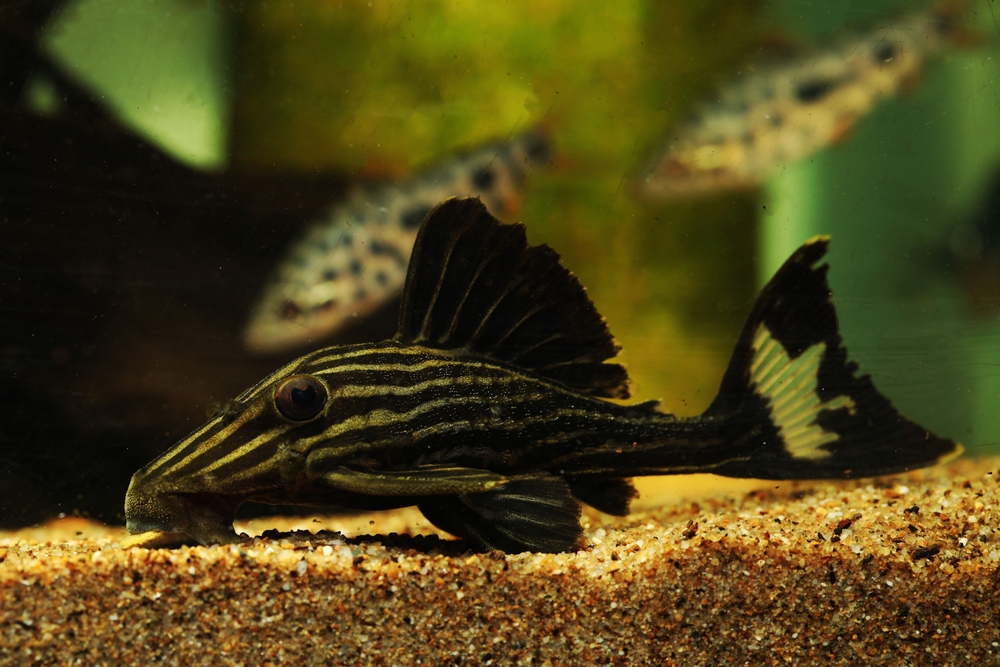
How to Fix Pleco Feeding Problems: 5 Ways
- Add Variety: Rotate vegetables, proteins, and algae wafers throughout the week. A diverse pleco diet prevents deficiencies.
- Feed at the Right Time: Offer food after lights are off to make sure the pleco gets its share before tankmates eat it.
- Check Water Quality: Poor water conditions can reduce appetite. Keep ammonia and nitrate levels low with regular maintenance.
- Include Driftwood: Make sure at least one piece of clean, aquarium-safe wood is always available. It supports digestion and helps mimic natural feeding behavior.
- Use a High-Quality Commercial Food: A balanced plecostomus food, such as Hikari Algae Wafers or Repashy Bottom Scratcher, ensures essential nutrients are covered.
Once you adjust the feeding routine, improvement often shows within a few weeks. A healthy pleco becomes more active, regains color, and resumes steady grazing.
Next, I’ll cover how often and how much to feed, creating a reliable schedule that keeps your pleco healthy without overfeeding your tank.
Pleco Feeding Schedule – How Often and How Much to Feed
Getting the feeding schedule right is just as important as knowing what to feed pleco fish. Overfeeding can pollute the tank, while underfeeding leads to malnutrition and stress. Plecos thrive on small, consistent meals that mimic their natural grazing habits in the wild.
Adult Plecos
Feed once daily or every other day. Offer food in the evening, shortly after lights go out, so your pleco can eat without competition. Remove any leftovers the next morning.
Juvenile Plecos
Young plecos grow quickly and need more frequent feedings. Provide smaller portions twice per day, morning and evening, while monitoring tank cleanliness.
Breeding or Recovering Plecos
Increase feeding slightly and include extra protein sources such as shrimp or bloodworms. These fish expend more energy and benefit from nutrient-rich foods.
How Much Food to Offer
- Feed only what your pleco can consume within 3–4 hours.
- Start with one or two slices of vegetables or a few sinking wafers, and adjust based on how much is left by morning.
- For protein foods, use small pieces about the size of the pleco’s eye as a general guide.
Seasonal and Environmental Factors
Plecos may eat less during colder months or if the tank temperature drops. Monitor their appetite and adjust portions rather than keeping a fixed schedule. Warm water and higher activity levels usually mean a stronger appetite.
Feeding Routine Tips
- Rotate foods throughout the week for a balanced pleco diet.
- Keep at least one algae wafer or piece of driftwood available at all times.
- Observe your pleco’s behavior at night to ensure it’s actively feeding.
Establishing a consistent routine keeps your plecostomus fish healthy and your tank stable. A balanced schedule prevents waste buildup, supports natural behavior, and maintains strong coloration.
Next, I’ll look at how a pleco’s diet affects tank cleanliness and algae control, and how feeding smartly keeps your aquarium balanced.
How Pleco Feeding Affects Tank Cleanliness & Algae Control
Many aquarists buy plecos believing they will keep the tank spotless on their own. While plecostomus fish do help manage algae, their effectiveness depends directly on what you feed them.
A healthy, balanced pleco diet not only keeps the fish strong but also affects how clean your aquarium stays over time. When plecos eat nutritious, easy-to-digest foods—like vegetables, algae wafers, and small portions of protein—they produce less waste.
Overfeeding or giving the wrong foods, such as fatty meat or leftover scraps, leads to excess debris and cloudy water.
A pleco can help with algae control, but it isn’t a substitute for regular maintenance. Proper filtration, water changes, and balanced feeding work together. Think of your pleco as part of the cleanup crew, effective only when given the right tools through a good diet.
More Pleco Facts
There are over 150 species of plecos, each with unique characteristics, behaviors, and dietary requirements. Some of the most common pleco species include the common pleco, bristlenose pleco, clown pleco, zebra pleco, royal pleco, and sailfin pleco.
They are nocturnal fish that prefer to hide in caves or other hiding spots during the day and come out at night to feed. In captivity, plecos require large aquarium tanks with good water quality and plenty of hiding spots.
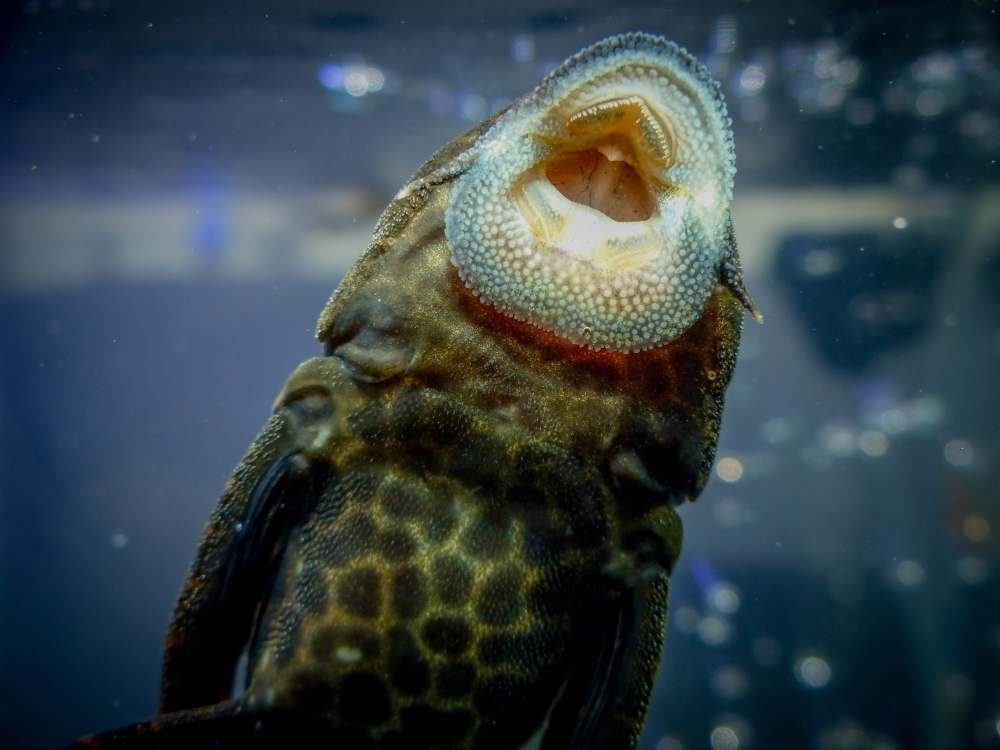
They have specialized teeth that allow them to scrape algae off surfaces, making them excellent algae eaters. However, plecos also require other sources of food such as pellets, vegetables, and protein-rich foods like shrimp or bloodworms.
FAQs About Pleco Diet and Feeding
Even experienced aquarists have questions about what to feed pleco fish. Their diets can vary depending on the species, tank setup, and age of the fish. Below are some of the most common questions fishkeepers ask about pleco feeding habits, nutrition, and care.
If your question isn’t listed, share it in the comments. We read every one and often update our guides with reader tips and real-world experiences.
What Vegetables are Safe for Plecos to Eat?
Plecos are omnivorous fish and can eat a variety of vegetables. Some of the safe vegetables for plecos to eat include zucchini, cucumber, lettuce, spinach, kale, and broccoli.
It is important to blanch or boil the vegetables before feeding them to the pleco to make them easier to digest.
What is the Best Food for a Pleco?
The best food for a pleco is a balanced diet that includes both vegetables and protein. Commercially available pleco pellets or wafers are a good option as they contain all the necessary nutrients.
It is also recommended to supplement their diet with fresh vegetables such as zucchini, cucumber, and spinach.
How do I Make Homemade Food for my Pleco?
Homemade food for plecos can be made by mixing gel formula with vegetables such as zucchini, cucumber, and spinach, with protein sources such as shrimp or fish.
The mixture can be blended together and formed into small balls or cubes. It is important to ensure that the homemade food is balanced and provides all the necessary nutrients, and always follow the instructions.
Can Plecos eat Fruit?
Plecos do not require fruit in their diet, but it does provide variety and additional vitamins. However, they can eat small amounts of fruit such as watermelon or cantaloupe as a treat.
What Should Be Included in a Pleco’s Tank?
A pleco’s tank should include hiding places such as caves or driftwood, as well as plants for them to graze on. The tank should also have a good filtration system and regular water changes to maintain water quality.
Do Plecos eat Fish Flakes or Pellets?
Plecos can eat fish flakes or pellets, but it is important to ensure that the food is specifically formulated for plecos and contains all the necessary nutrients. It is also recommended to supplement their diet with fresh vegetables.
What Do Plecos Eat in the Wild?
In their natural habitats, plecos thrive on a varied diet that includes algae, plant matter, and small invertebrates. Algae serve as a staple food source, while plant matter supplements their nutritional needs.
Plecos in the wild also feed on small insects and crustaceans, ensuring they receive a diverse range of nutrients and fiber necessary for their overall well-being.
What Do Plecos Eat in Captivity?
When kept in an aquarium, plecos still require a diet that replicates their natural eating habits. High-quality sinking pellets specially formulated for omnivorous fish serve as a staple food source, effectively imitating their natural diet and providing the essential nutrients they need to stay healthy.
Do Plecos Eat Fish?
Unlike predatory species, plecos are generally peaceful and do not exhibit predatory behaviors towards other fish. Their preference is towards consuming algae and plants. However, plecos can nibble on the slime coat of slow-moving fish or even consume fish eggs, though this behavior is not common.
Keep Your Aquarium Thriving: Next Steps for Smarter Fishkeeping
Now that you know what to feed pleco fish, take your tank care to the next level. Learn how to cycle an aquarium the right way to create a stable, healthy environment from day one. Make feeding effortless with an automatic fish feeder that keeps your schedule and your fish perfectly fed.
Improve oxygen flow and reduce stress in your tank by choosing the right aquarium air pump for your setup. And don’t forget to regularly check water quality with a reliable aquarium test kit to catch issues before they harm your fish.
Share Your Pleco Story! Have you found a food your pleco goes wild for? Or maybe you’ve discovered a clever feeding trick that keeps your tank spotless? We’d love to hear it! Drop your experience in the comments — your tip could help thousands of other fishkeepers fine-tune their pleco diet.
